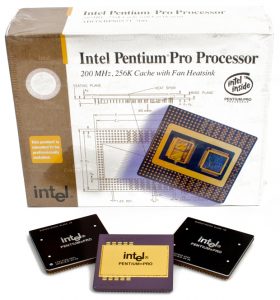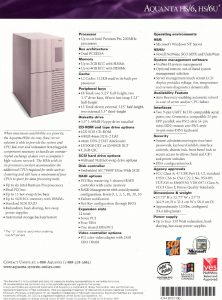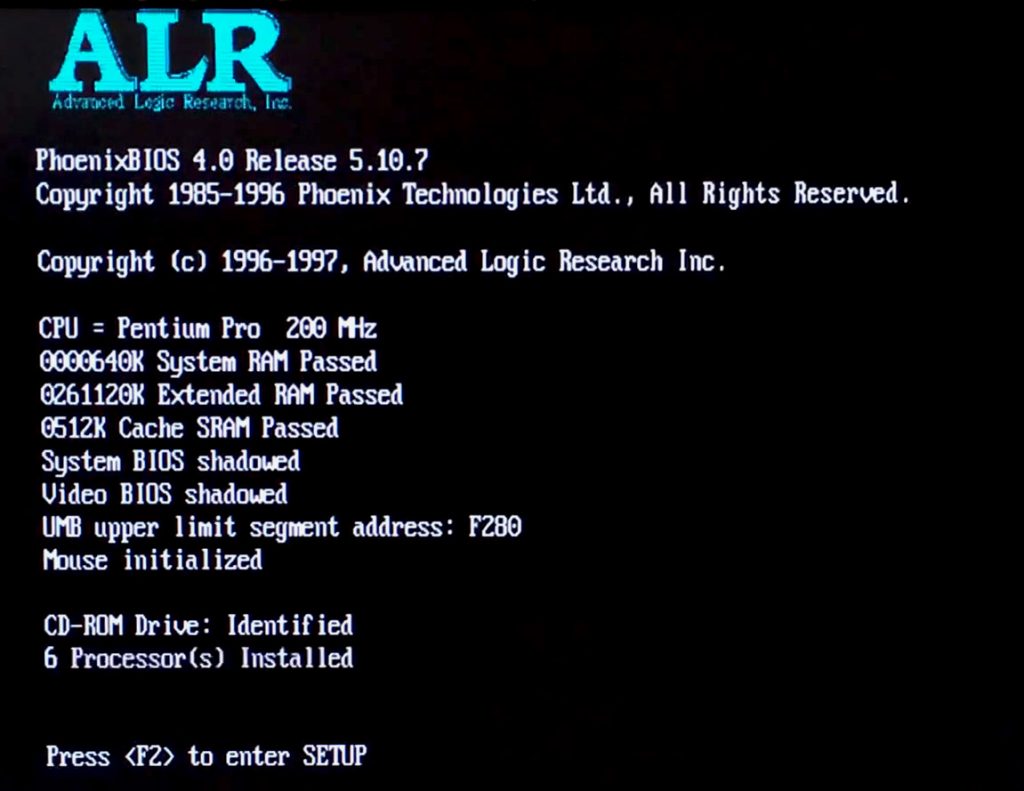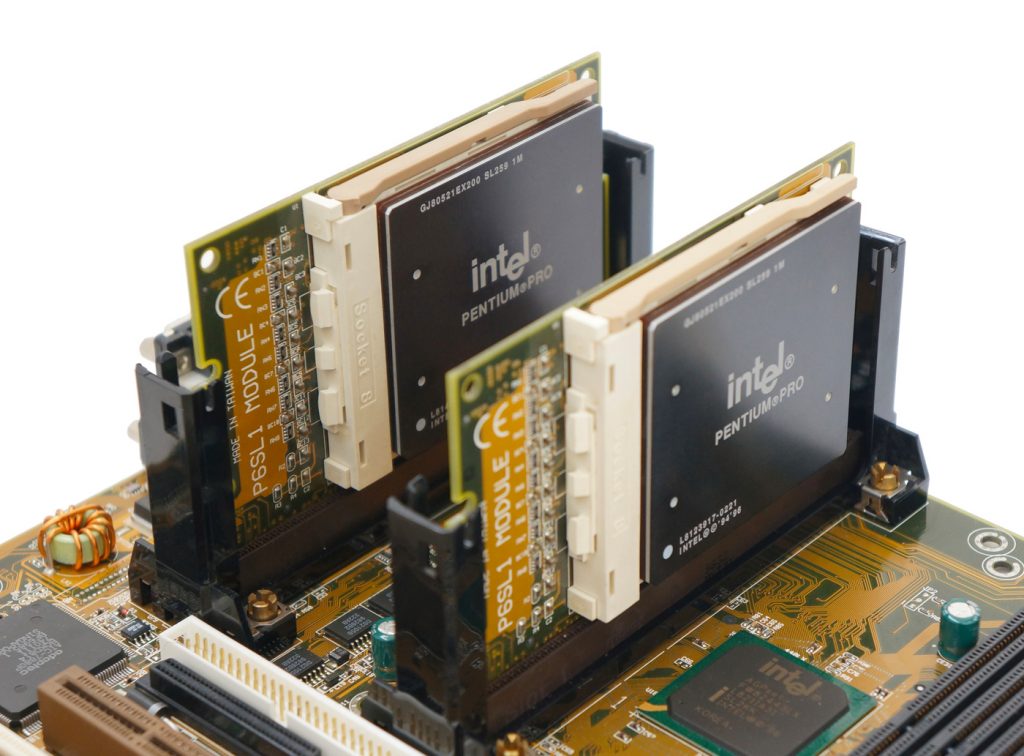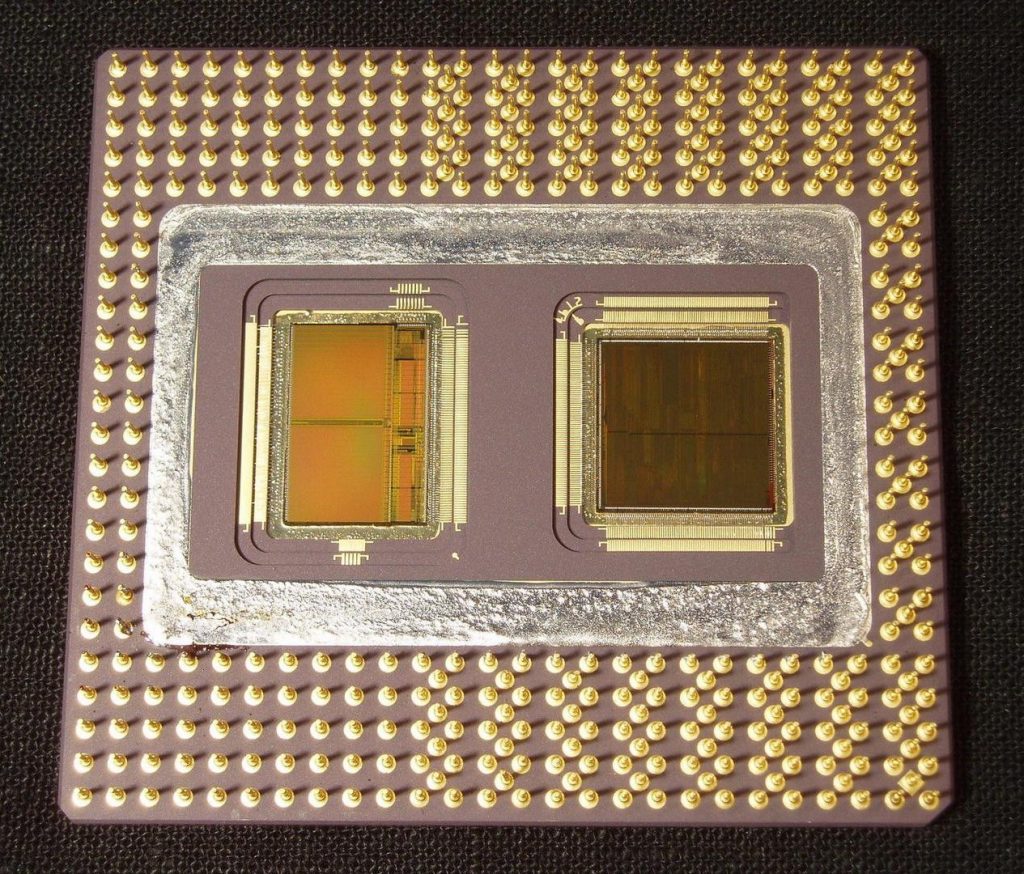Chapter 2: Mini-Mainframe at Home: The Story of a 6-CPU Server from 1997
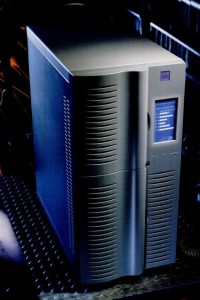 At the end of 2018, I started one project, which was called “Mini-Mainframe at Home: The Story of a 6-CPU Server from 1997”. It was dedicated to the ALR Revolution 6×6 super server with six Intel Pentium Pro processors and a cost comparable to that of a brand new Ferrari in 1997. It took some 450 days and finally follows the continuation of the story, the super server received the long-awaited upgrade – six Intel Pentium II Overdrive 333 MHz Processors! For those years, such power was simply colossal, but how it compares with today’s and how much increased performance you will learn from this article.
At the end of 2018, I started one project, which was called “Mini-Mainframe at Home: The Story of a 6-CPU Server from 1997”. It was dedicated to the ALR Revolution 6×6 super server with six Intel Pentium Pro processors and a cost comparable to that of a brand new Ferrari in 1997. It took some 450 days and finally follows the continuation of the story, the super server received the long-awaited upgrade – six Intel Pentium II Overdrive 333 MHz Processors! For those years, such power was simply colossal, but how it compares with today’s and how much increased performance you will learn from this article.
I’ll admit 450 days is quite a long time, so I will briefly recall the contents of the previous series of the article.
And it all started like this: plunging into the world of mainframes and supercomputers , I wanted to try some super powerful system and the choice fell on the ALR Revolution 6×6 super server, which had six Socket 8 and supported up to 4 GB of RAM. For the late 90s, these were scary numbers, as well as its cost. One processor for such a system was estimated by Intel at $ 2675, and six were required, for one module of 256 MB of server memory it was necessary to pay $ 3500, and sixteen sticks were needed to get the coveted 4 GB of RAM.
A disk subsystem was also available with seven raid controllers and an 860 GB disk array, a twenty-kilogram power supply unit and the server itself … As a result, it was possible to reach amounts from 270 to 500 thousand dollars, and if you add here the inflation level over the years, these numbers will range from 435 to almost 800 thousand dollars. Now, in terms of performance, any low-cost computer will be faster than this monster, but the very fact of having such an opportunity in 2020, to feel the full power of that time, makes these large numbers insignificant, it is much more important to find and assemble such a monster.
In the previous story, I studied performance with six Intel Pentium Pro processors with a frequency of 200 MHz and a 256 KB second-level cache and even overclocked all six copies to 240 MHz. As well as six top-end Intel Pentium Pro “black color” with a frequency of 200 MHz and a 1M L2 cache, which were able to overclock to 233 MHz. In my configuration, I had 2 GB of RAM standard FPM, 16 memory modules of 128 MB, which took over 4 minutes to initialize during the initial POST procedure.
Four gigabytes of RAM would bring this figure to 9 minutes, which is comparable to accelerating a train or taking off an airplane, although the latter can do it much faster. But then, having loaded at my disposal, six physical cores arrived at once, but without the support of MMX and especially SSE instructions.
Intel Pentium II Overdrive 333 MHz processor
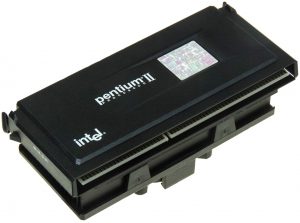 The basis of any computer is the central processor. Intel Pentium Pro processors first appeared in 1995. Then there were the usual Pentiums without the Pro prefix, but this prefix in the name of the models said that these processors are positioned primarily as solutions for servers and workstations with their special Socket 8. The usual Intel Pentiums were installed in Socket 5 and 7. A significant difference between the Pro and the regular version of the Pentium desktop was the presence of a second-level cache in the Pro version, which, being on the same package, worked at the processor’s core frequency, thus allowing it to significantly increase performance.
The basis of any computer is the central processor. Intel Pentium Pro processors first appeared in 1995. Then there were the usual Pentiums without the Pro prefix, but this prefix in the name of the models said that these processors are positioned primarily as solutions for servers and workstations with their special Socket 8. The usual Intel Pentiums were installed in Socket 5 and 7. A significant difference between the Pro and the regular version of the Pentium desktop was the presence of a second-level cache in the Pro version, which, being on the same package, worked at the processor’s core frequency, thus allowing it to significantly increase performance.
For the various Intel Pentium Pro models, the L2 cache size ranged from 256 KB to 1 MB. Pentium Pro’s first level cache was 16 KB, of which 8 KB was for data and the same for instructions. For the subsequent Intel Pentium-IIs, the second-level cache worked at half the processor core frequency and amounted to 512 KB for all models, and it was located in the form of separate microcircuits on the cartridge at a distance from the CPU die itself. The L1 cache size was doubled in size to 32K, which offset the performance hit of the slower L2 cache.
The tested processors were produced at a 350 nm process technology. The number of transistors in the Pentium Pro totaled 5.5 million for the processor core itself and as many as 15.5 – 31 million were in the L2 cache memory, depending on its size. The L2 cache itself was located on a separate die near the CPU core. The processor had a free multiplier and the system bus frequency, depending on the model, was 60 or 66 MHz. Overclocking of the processor rested on overclocking the L2 cache, it the limiting factor.
The Intel Pentium II Overdrive 333 MHz was a very interesting processor. This processor appeared, it can be said, thanks to the US Government, which funded a program to create supercomputers for modeling nuclear explosions and tracking the state of the country’s nuclear arsenal. The US government allocated funds for the construction of such a supercomputer, Intel won the tender and in 1997 handed over a turnkey supercomputer called “ASCI Red”.
Posted in:
Boards and Systems


